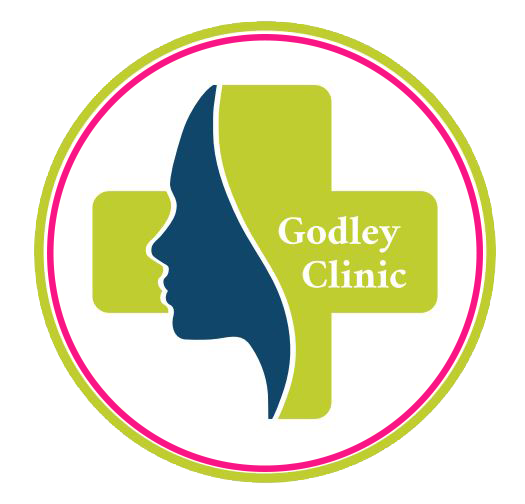RPA vs PRP: What’s Next in Regenerative Skin Treatments
What if your body’s healing wasn’t limited by age or lifestyle, but guided by a precise set of signals your body already understands? That’s the idea behind Regenerative Protein Arrays (RPA), a new advancement drawing global interest in regenerative and aesthetic medicine.
What Are Regenerative Protein Arrays?
RPA are made up of proteins, growth factors, and microRNA derived from the layers of the placenta. These are the same types of signals the body naturally uses to repair tissue, calm inflammation, and encourage renewal. Unlike stem cells or exosomes, RPA are acellular — meaning they don’t contain living cells, just the molecular “instructions” that tell cells what to do.
In aesthetics, this raises an exciting possibility: could we move beyond treatments that only smooth or lift, and instead guide the skin’s natural repair system in a more precise and consistent way?
How Do They Compare to Today’s Options?
We asked Dr. Godley how RPA stack up against familiar treatments in our Vancouver and Abbotsford clinic. Here’s how he explains the differences:
PRP / PRF: These treatments use your blood. They release growth factors slowly, which can stimulate repair and improve skin texture, but results vary with age and health.
Thread Lifts: These are mechanical. Tiny dissolvable threads lift and reposition tissue while stimulating collagen as they break down.
Biostimulators (Radiesse, Sculptra): These are injectable gels that act as scaffolding, encouraging the skin to produce new collagen over time.
Neuromodulators (Botox, Dysport): These relax facial muscles to soften lines, but they don’t affect the skin’s ability to heal itself.
Regenerative Protein Arrays (RPA): These are different. Instead of relying on your blood, lifting tissue mechanically, or adding scaffolding, RPA delivers a pre-made library of repair signals — proteins, growth factors, and microRNA that the body already recognizes.
Think of it like this: PRP/PRF are like cooking with whatever ingredients you have in your own kitchen — sometimes plenty, sometimes not. RPA, on the other hand, are more like receiving a prepared recipe kit, complete with the exact ingredients and instructions. The body doesn’t have to rely only on what’s available; it’s given everything it needs to trigger repair in a more consistent way.
Where in the World Are They Being Studied?
Interest in RPA is growing internationally:
United States: Private clinics and early-stage research are experimenting with RPA, though FDA approval remains limited.
South Korea & Japan: Global leaders in regenerative and cosmetic medicine, actively advancing innovation.
Europe (Germany, Switzerland): Researching acellular therapies under strict medical frameworks.
The fact that multiple countries are looking at this technology shows how much momentum it's gaining.
What About RPA in Canada?
While these advances are making headlines abroad, Health Canada has not approved Regenerative Protein Arrays for medical or aesthetic treatments.
Currently in Canada:
Approved: PRP and PRF (your blood), widely used for skin rejuvenation, under-eye treatments, and hair health.
Not approved: Stem cell injections, exosome therapies, placenta-derived products, and RPA.
At Godley Clinic, we focus on treatments that are safe, effective, and approved by Health Canada — including PRP, PRF, biostimulating fillers, thread lifts, and energy-based devices like Morpheus8 that stimulate collagen renewal.
Why Talk About It?
Because this is where the field is moving. Patients often hear about new treatments abroad before they’re available in Canada. Our role is to help you understand what’s safe and proven now, and what’s still emerging.
At Godley Clinic, we combine the best of regenerative and aesthetic medicine to deliver results today — while keeping a close eye on where the future is heading.
RPA Frequently Asked Questions
Can I get RPA treatments in Canada?
No. At this time, Health Canada has not approved Regenerative Protein Arrays for medical or aesthetic use. If you see RPA offered in Canada, it’s important to ask questions and verify that the treatment is compliant with Canadian regulations.
Why isn’t RPA approved yet?
Health Canada requires extensive research, clinical trials, and safety data before approving any new treatment. While RPA are being studied in countries like the U.S., Japan, and Germany, the evidence is still emerging, and approval can take years.
Is RPA the same as stem cell therapy?
No. Stem cell therapy uses living cells, usually taken from bone marrow, fat, or donated tissue. These cells were once thought to directly replace damaged tissue, but today we know they mostly work by sending out repair signals.
RPA (Regenerative Protein Arrays) are different. They don’t contain living cells. Instead, they are made up of proteins, growth factors, and microRNA — the “messages” cells use to guide repair. Think of stem cells as the orchestra, and RPA as the sheet music. One sends the signals, the other is the signals themselves.
What’s the safest alternative right now?
In Canada, regenerative options such as PRP and PRF are safe and approved. They use your own blood to release growth factors that stimulate skin repair, improve texture, and support hair health. At Godley Clinic, we also use biostimulators, thread lifts, and neuromodulators for natural, physician-led rejuvenation.
Will RPA eventually come to Canada?
It’s very possible. With growing global interest and research, Canada will likely review RPA in the future. Until then, safe and effective regenerative treatments are available here today.
Ready to begin your personalized journey? Book your consultation with Dr. Godley in Vancouver or Abbotsford and discover the treatment approach that’s right for you.


